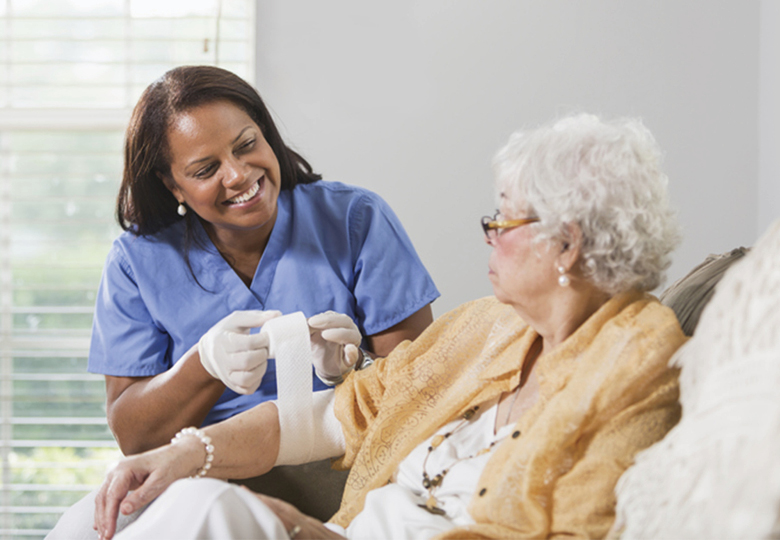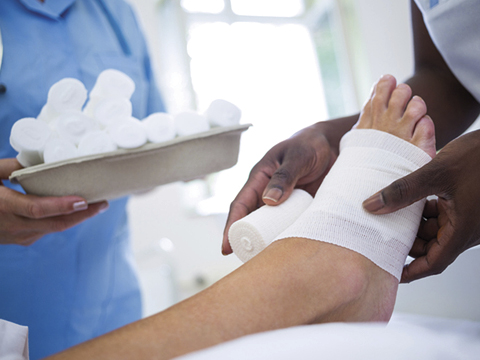Here are six facts you should know about NPWT
1. NPWT can treat many different kinds of wounds
Negative pressure wound therapy treats severe wounds that are beyond the care of standard antibiotics and bandaging. NPWT uses a special dressing that seals the wound. A gentle vacuum pump is attached to remove drainage from the wound. The types of wounds this therapy can help treat include:
- Acute wounds
- Traumatic wounds
- Sub-acute wounds
- Second- and third-degree burns
- Fistulas (tunnels) to organs and body cavities
2. NPWT is not used for all types of wounds
While negative pressure wound therapy effectively treats various wound types, there are certain kinds of wounds it cannot treat. These include:
- Necrotic (dead) tissue with eschar
- Osteomyelitis (inflamed bones)
- Wounds with active cancer
- Exposed blood vessels, organs, or nerves
3. NPWT can be done from home
Portable wound care kits and home care services make it possible to be treated at home. Wound vacs are portable and discrete plus the treatment is often provided as an outpatient service. Allowing you to recapture a sense of normalcy and avoid mounting expenses of receiving care at a hospital or rehab facility. Of course, it is important to follow the treatment procedures put forth by your practitioner to ensure your wound heals properly. If you are going through treatment at home and notice your injury worsening or you begin to feel ill, contact your practitioner right away.
4. NPWT is not always easy
Healing a chronic wound is difficult under any circumstances. It can be painful, slow, and frustrating if you do not see progress quickly. Undergoing negative pressure wound therapy can help get you on the road to recovery, but it is not without its challenges. Wound dressings need to be changed multiple times a week, and you will be attached to the pump 24 hours a day.
While NPWT can be a daunting process, surrounding yourself with a support system, including an excellent clinical team, can make all the difference.
5. NPWT has been tried and tested
Negative pressure wound therapy has been around for decades and even has its roots in ancient Roman procedures. Modern NPWT became mainstream during the mid-1990s after the U.S. Food and Drug Administration approved it and it is now used across the country in hospitals, rehab facilities and wound care clinics.
6. The benefits of NPWT are clear
When you are suffering from a severe wound, it can be hard to see the upside. However, if you are following negative pressure wound therapy guidelines and healing well, the treatment offers significant benefits, including:
- Earlier hospital discharge
- Cost savings
- Return to normalcy
- Quicker wound healing for a better chance of recovery
- Improved health-related quality of life
How NPWT works
Lincare works closely with you and your practitioner to monitor your therapy. Throughout negative pressure wound therapy, your wound will be cleaned and dressed with a special foam by your practitioner, and then sealed with an adhesive film, then a tubing port attached to the top of the film and connected to the wound pump. This allows for fluid to then be removed and contained within the wound pump. This process promotes the growth of healthy tissue allowing your wound to heal.
Conclusion
A chronic wound has the potential to become infected, make you sicker and even be life-threatening if not treated properly. Understanding how negative pressure wound therapy works can help you discuss therapy options more confidently with your practitioner and enable you to get the treatment you require. If you ever have questions or are concerned about how a wound is healing, do not hesitate to call your practitioner or clinical staff and ask for help.

